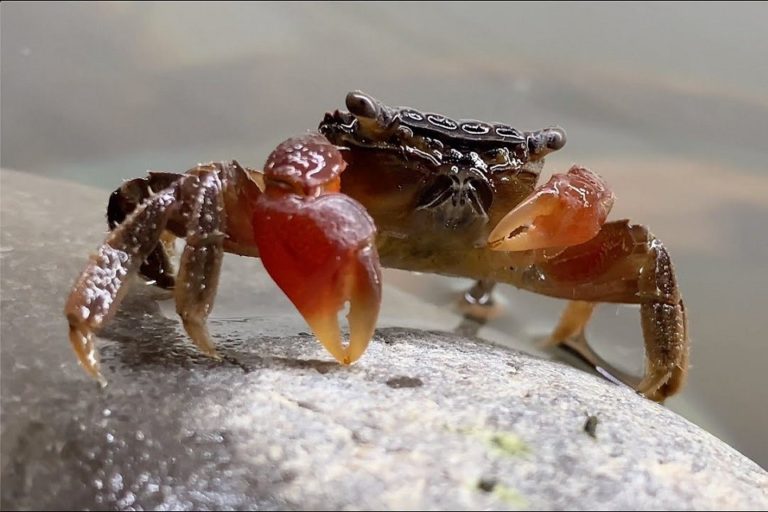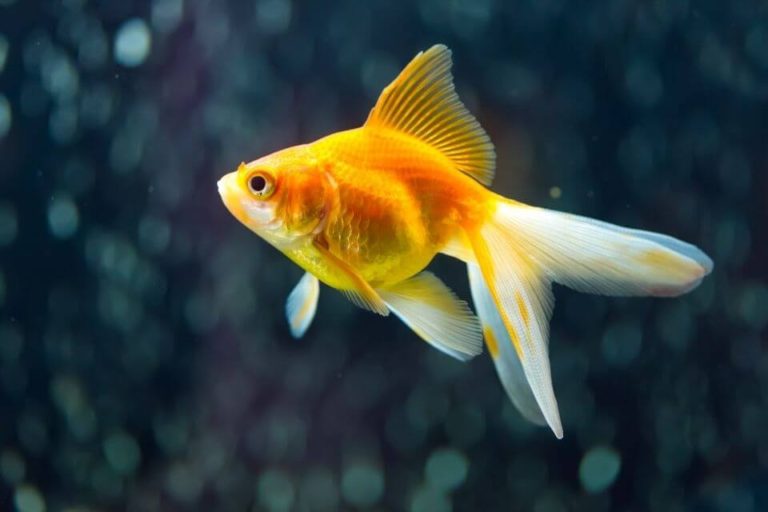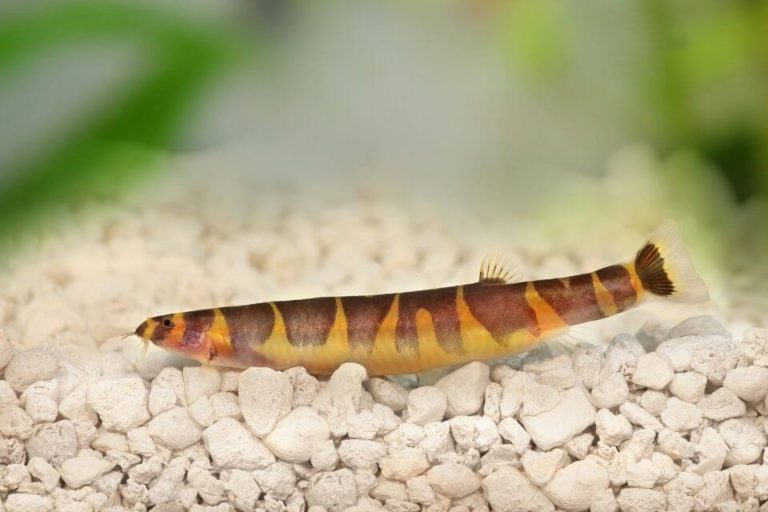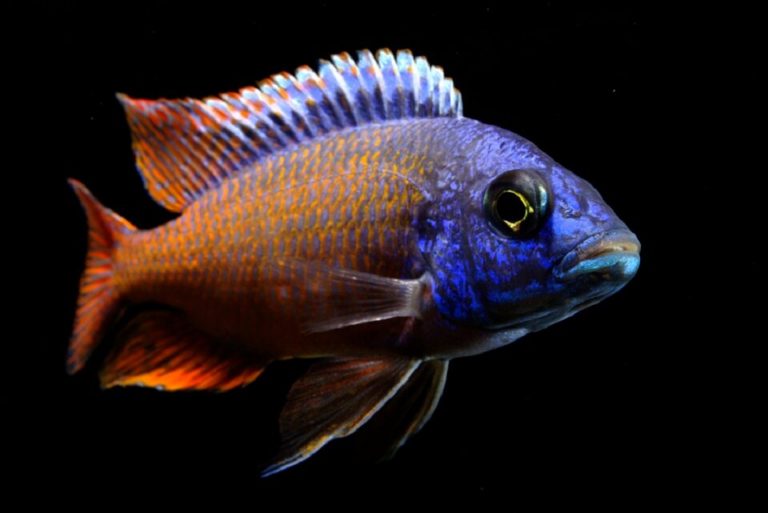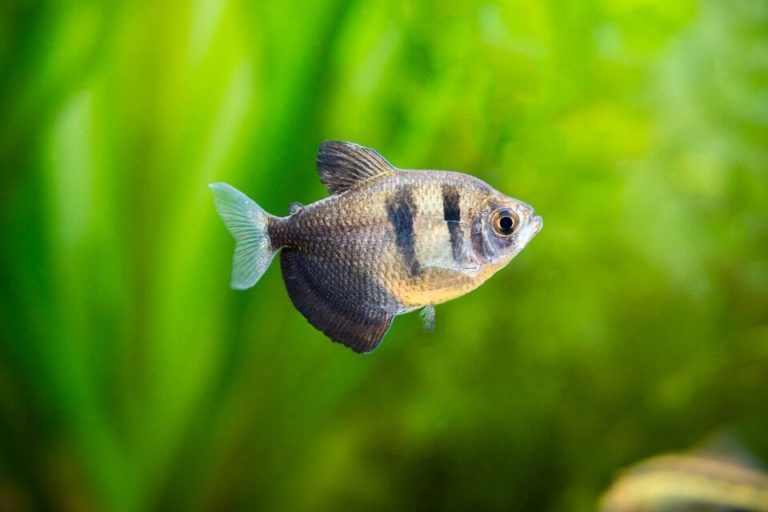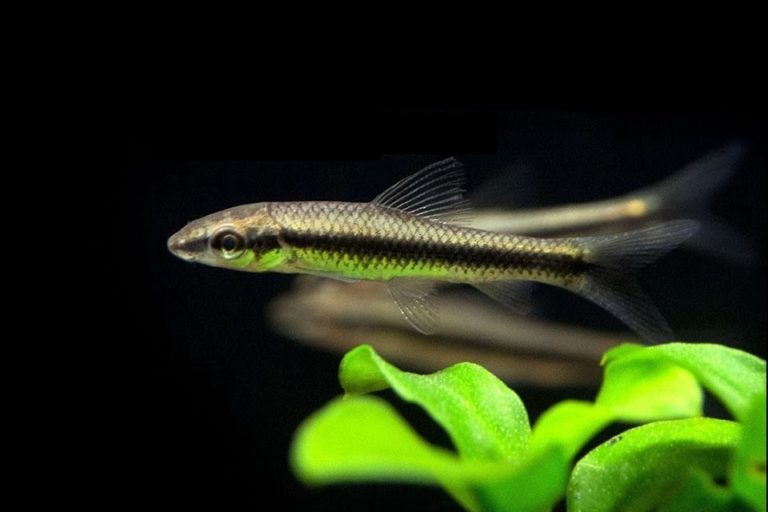Rainbow Cichlid Care: Size, Lifespan, Tank Mates, Diseases & Prevention
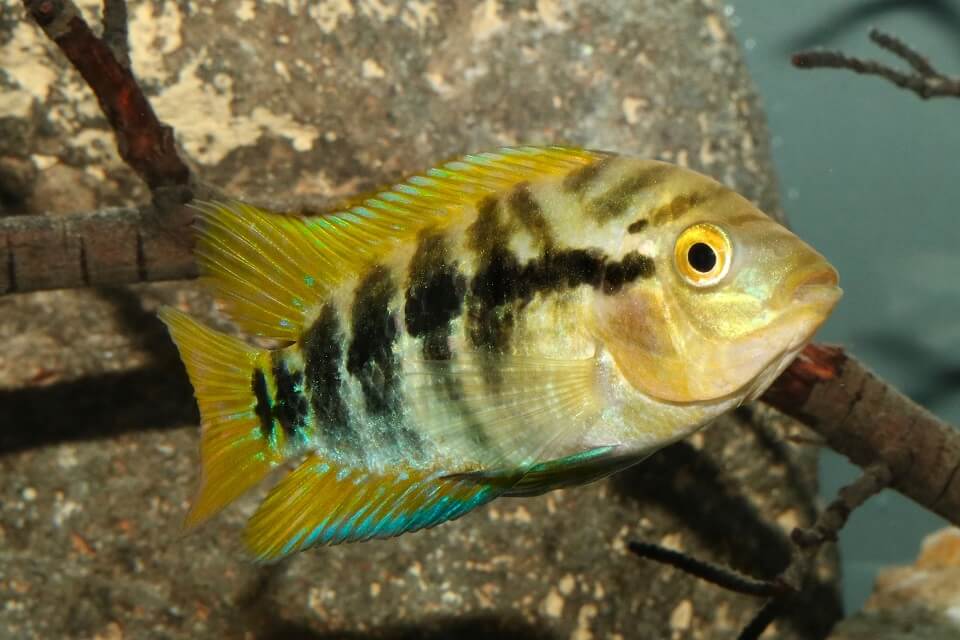
Rainbow Cichlid is a freshwater fish from the broader fish species of Cichlids. This fish is quite popular among aquarists because of its gorgeous colors and adaptability to a variety of environments.
They are the ideal fish for beginner fish keepers as well. If you have a tank full of other Central and South American aquarium fish, these Cichlid species are a fantastic addition. They should be kept with other fish that demand similar water conditions.
This active and adaptive fish would make a great addition to any tank due to its vibrant hues. In this Rainbow Cichlid care article, you will get all the tips and tricks that you should know before you make a decision.
We discussed all the aspects such as tank size, tank setup, food, breeding, and compatible tankmates.
Fast Setup, Whisper Quiet, Continuous Water Flow
Buy Now ➮
| Quick Facts: | |
|---|---|
| Common Names : | Rainbow Cichlid |
| Origin : | Rivers and Lakes in South and Central America |
| Family : | Cichlidae |
| Scientific Name : | Herotilapia multispinosa (syn. Archocentrus multispinosus) |
| Care Level : | Easy |
| Temperament : | Peaceful, but can be little aggrassive during spawning |
| Social : | Community fish |
| Diet : | Omnivores |
| Size (average) : | 3 - 4 inches |
| Lifespan : | 5 - 7 years |
| Breeding : | Egg layer |
| Minimum Tank Size: | 20 gallons (approximately 75 liters) |
| Tank Environment : | Freshwater, Gravel or Sand substrate, Driftwood, and Rocks for decorations, Hardy live plants or Silk plants |
| Temperature : | 70 - 78 °F (21 – 25 °C) |
| Water Hardness : | 10 - 20 dGH |
| Water pH Level : | 6.5 - 8.0 |
Species Overview
There are more than 1,650 species of Cichlids that are part of the family including Rainbow Cichlid. The discovery of new species is increasing at an alarming rate. They are one of the smallest Cichlid species that are known for their bright colors.
These fish species are belonged to the Cichlidae fish family and are scientifically called Herotilapia multispinosa (syn. Archocentrus multispinosus).
They have been officially identified in 1867 and are endemic to warm water bodies such as Rivers and Lakes in Central and South America. They are endemic to Honduras, Nicaragua, and Costa Rica.
Rainbow Cichlid Size
The Rainbow Cichlid size may reach up to 7 inches in length in the wild, however, the average Rainbow Cichlid size will be around 3 to 4 inches in a captivity environment.
Rainbow Cichlid Lifespan
In a tank with good and suitable care, the Rainbow Cichlid lifespan is about 5 to 7 years in captivity while up to 9 years in their natural habitats.
Appearance, Colors & Variations
An oval-shaped fish with pointed anal and dorsal fins is indeed the Rainbow Cichlid. They are one of the smallest of the Central American Cichlids.
When in the wild, they may grow to be between 5 and 7 centimeters long, with males being somewhat smaller than females.

There is an uneven black horizontal strip that extends from the gill cover behind the eye towards the tail fin, which is golden to orange in color. They have orange eyes and most of their fins are orange.
It is just the pelvic fins and the anal fins that don’t match the rest of the body, which are both vivid blue and orange-tinged. The tips of their dorsal fins are orange, while the rest of the fin is blue.
Behavior & Temperament
This species of cichlid is a non-aggressive community-friendly fish that gets along well with other non-aggressive Cichlids of the same size. In these households, the elder siblings are responsible for the care of the younger ones.
Because of its peaceful nature, it is also easy to keep in a home aquarium. In the center of the tank, they are lively and swim around in circles. They use caves and rocks to shield themselves from predators, so they need a variety of places to hide when they feel threatened.
They are most active in the daytime and require Aquarium lighting that mimics the light conditions they would encounter in their native environment. “Smelling” water is one of the Cichlids’ most distinctive traits.
These fish species breathe through their nostrils, sucking water from the tank and spitting it back out. They have the ability to make noises while underwater.
Though it’s not known for sure, experts suspect that this fish utilizes its swim bladder to produce varied noises during mating.
Rainbow Cichlid Care & Habitat Setup
Beginners and expert fishkeepers alike will enjoy the fish because of its easy maintenance. New aquarists will appreciate its small size and ability to thrive in a variety of habitats. Perform regular water changes in order to keep their water clean.
When kept in a tank that closely resembles the fish’s native habitat, it does exceptionally well. This fish can tolerate a wide range of water temperatures and levels of acidity.
Because these fish are omnivorous, it is simple to provide them with a well-balanced diet. Rainbow Cichlids may be fed a variety of fish diets, including frozen blood worms, vegetable, and meat flakes, and also plankton and other aquatic organisms.
It is normally in good health and has a high level of resistance. They are susceptible to a number of common ailments, such as ich and parasite infestations, all of which are treatable very readily.
Rainbow Cichlid Tank Size
In order to reach their maximum potential and remain stress-free, they require a lot of swimming room and comfort. They require a large tank with plenty of space.
The Rainbow Cichlid tank size should be at least 20 gallons capacity if you wish to keep more than a single Rainbow Cichlid. A community tank of at least 150 gallons is also required if keeping them with other fish.
A larger tank (about 20 gallons per fish) is required for some of them. Weekly water changes of 20% are recommended to remove waste items from the tank.
Water Parameters and Testing
For the most part, they prefer muddy bottoms and tiny lakes with plenty of detritus like logs, tangled roots, and so on. They also necessitate harsh alkaline water.
If you reside in a colder climate, you may require a water heater to keep the water temperature between 70 and 78 degrees Fahrenheit. An ideal pH range is 6.5 to 8, with a water hardness range of 10 to 20 dGH.
Your fish won’t get sick or be stressed if you keep them in these circumstances. It’s essential to have a water testing kit on hand before getting any fish, so you know exactly what’s going on in there.
Maintaining the water parameters would be easier with the aid of this device. In addition, it is recommended that the water be checked at least once a week.
Rainbow Cichlid Tank Setup
– Substrate
First, the bottom of the tank must be filled with Aquarium Sand substrate, since they prefer a muddy environment. If sand isn’t available, you may alternatively use Fine Gravel substrate.
– Lighting
It requires gentle aquarium lighting that is comparable to the lighting conditions seen in their native environment.
– Water Filter
The aquarium filtration system, which also regulates water flow, is one of its most critical components. In addition to having clean water, the tank should have moderate water flow with some quieter places.
– Decorations
When they feel threatened, they have plenty of places to hide in their natural habitat. Driftwood, Roots, pebbles, caves, and flower pots may all be used to provide a similar effect at home.
– Suitable Aquarium Plants
Floating aquarium plants, for example, maybe grow in the aquarium because the fish don’t eat them. In case something happens, make sure the plants are resilient and have strong roots.
A few recommendations are:
Common Diseases and Prevention
It’s important to keep in mind that they are particularly vulnerable to common fish diseases such as low water quality and oxygenation. Ich is a typical source of confusion. For three days, raise the temperature of the tank to 86° F (30° C).
A copper treatment may be necessary if that doesn’t work (remove any water conditioners). For the treatment of Ich, there are a number of copper-based fish medicines available.
Be careful to follow the manufacturer’s recommendations when it comes to copper use. In addition, copper levels may be monitored with a copper test.
You can also use an Ich medicine therapy to raise the fever. Metronidazole is effective in the treatment of intestinal illness.
Skin flukes and other parasite infestations (protozoa, worms, etc.), as well as fungal and bacterial illnesses, are common in these fish. It’s a good idea to familiarize yourself with common tank illnesses.
Being aware of the warning signals and being able to address them promptly can make all the difference.
Rainbow Cichlid Diet and Feeding
Fish, like people, require sufficient nutrition to live their optimum lives. However, They are not fussy eaters, they still require nutritious food they enjoy. This is critical in order to maintain the highest level of immunity possible.
Although they are omnivorous and eat algae and tiny insects, and even fish, Rainbow Cichlids are primarily omnivores. You should give them flocculant debris and any kind of algae you find in the wild, as well.
You may also give your fish the following foods in captivity:
- Mosquito larvae
- Tubifex
- Bloodworms
- Ground vegetables
- Ocean plankton
- Brine shrimp
- Floating food sticks
- Cichlid Pellets
A tiny bit of food twice a day is more than plenty for these fish. You should also let the fish fast one day per week. The tank water will not become as unclean owing to food waste, as well as the ammonia level will remain low.
In addition, the fish will graze on algae in the tank regardless. You may use these in any tank, and they will keep the algae levels under control.
As a result, overfeeding can lead to obesity, which in turn can lead to a wide range of illnesses, including malnutrition, which can be deadly.
Gender Difference
This fish’s sexes are difficult to tell apart, as is the case with most freshwater species. If you pay carefully, you might be able to tell them apart based on the slight changes between them.
If you compare the size of a female Rainbow Cichlid to that of its male counterpart, you will see that the female is smaller. Only once you have both sexes of fish in your tank you will discover this and many other little distinctions.
The colors of male fish, for example, are somewhat brighter than those of their female counterparts Male fish have sharper fins than female fish, which is why they are more aggressive.
Nobody knows why there are so few variations. To fully appreciate the differences between the sexes of the fish, you’ll probably need the assistance of a knowledgeable professional. If you’re a novice, you’ll have a hard time distinguishing between the fish!
Rainbow Cichlid Breeding
As they are generally open breeders, it implies that the older siblings start taking care of the younger ones, while the parents do nothing for the offspring.
In addition, they are easy to breed in a tank if you take the necessary precautions and follow the provided instructions.
It’s best to keep a bunch of young rainbow fish together and let them form pairs on their own since it’s impossible to tell which ones are males and females while they’re alone. They have a separate breeding tank after a couple has been established.
Temperature, pH, as well as water hardness, should all be within a range of 5 to 10 dH inside the breeding tank, which should contain sufficient food. A flat stone should also be present in the tank to serve as a trigger for the start of spawning.
As soon as they are ready, the pair will darken to black. After spawning, the female fish will lay between 300 and 1,000 eggs, and the parents should fan them for three days to keep them cool.
To avoid a fight, take the fry from the tank and place it in a new one when the parents have moved on. For the next week, give the fry brine shrimp as well as Cyclopeeze to keep them healthy.
Rainbow Cichlid Tank Mates
Because this Cichlid species is tolerant of a wide range of tank mates, it is a good choice for beginners. If your Rainbow Cichlid tank mates are hostile, you don’t want them to hurt your fish, so watch out for that.
Consider the fact that it can make other smaller, as well as slower fish, feel agitated, so it’s best to keep them in a tank with like-minded companions.
In addition, it can be housed separately or in a group. They are exhibits schooling behaviors it is best to keep 5 to 6 of them together. In addition, nearly all Rainbow Cichlids may be housed together, and they will all thrive.
Here are some potential Rainbow Cichlid tank mates to consider:
- Rainbow Shark
- Silver Shark
- Red Tail Shark
- Tiger Barb
- Denison Barb
- Dwarf Gourami
- Freshwater Angelfish
- Otocinclus Catfish
- Blood Parrot Cichlid
- Giant Danios
- Firemouth Cichlid
- Rubber Lipped Pleco
- Bristlenose Catfish
- Clown Pleco
- Blue Phantom Pleco
A good rule of thumb is to look for tank mates who aren’t aggressive and have the same temperament.
Origin and Distribution
A Central American freshwater fish renowned as the Rainbow Cichlid, Herotilapia multispinosa (syn. Archocentrus multispinosus) is a cichlid.
Patuca River (Honduras) through Matina River (Costa Rica) on the Atlantic slope of Nicaragua as well as Costa Rica and Guasaule River (Nicaragua and Costa Rica) through Tempisque River (Costa Rica) on the Pacific slope of Nicaragua and Costa Rica.
The Choluteca River, on Honduras’ Pacific coast, has also yielded specimens. This species lives in muddy bottomed lakes and wetlands, where it feeds mostly on algae with its unique teeth and 3.5% of its jaw extension.
The Pacific and Atlantic slopes in Central America are home to this cichlid, which may be found from Costa Rica to Honduras and Nicaragua.
Murky and shallow waterways, such as the weedy edges of lakes and streams, or tiny ponds that are occasionally inundated by surrounding rivers, are the most typical habitats for it. In Hévz, Hungary, a new population has taken root in a nearby hot spring.
FAQs
Are Rainbow Cichlids Aggressive?
Because they are generally not aggressive toward other fish in the tank, they make excellent additions to a community aquarium.
How Big Do Rainbow Cichlids Get?
Most fully frown Rainvow Chchlid are up 7 inches in length in the wild while their size is between 3 to 4 inches in aquarium settings. There are shades of red and brown in the fish’s coloration.
How Many Rainbow Cichlids Should Be Kept Together?
It is recommended that they can be kept in groups of 6 or more since this will ensure that they have enough area to swim.
Do Rainbow Cichlids Eat Plants?
Cichlids, on the other hand, are known to devour a wide variety of aquarium plants, which you may not be conscious of.
It is common knowledge that many cichlids are herbivores, so while their natural food is algae, they can enjoy the aquarium vegetation you’ve invested in, too.
Do Rainbow Cichlids Have Teeth?
The tricuspid teeth of the Rainbow Cichlid set it apart from other Central American cichlids. Filamentous algae constitute a significant portion of their food in the wild.
Are Rainbow Cichlids Mouth Brooders?
For the duration of the breeding season, the male and female cichlids mate monogamously as well as the eggs are placed on a substrate to which they adhere rather than being brooded in the mouth.
How Much A Rainbow Cichlid Cost?
Depending on the size and appearance, this species may cost anywhere from $10 to $30. Rainbow Cichlids may be acquired from a variety of local aquarium stores as well as through internet providers for home aquarium keepers.
Final Thoughts
It is clear that these fish have been in the aquarium for a long time and are friendly. Rainbow colors, a tranquil atmosphere, and a small and manageable size are all reasons why they are popular.
This is especially true around the moment of spawning when they might change their hue based on their emotions. For the most part, they have a golden to the orange body with gorgeous blue-hued fins and lower body, as well as tips of their fins.
In addition to their space requirements, Rainbow Cichlids can be picky about the tank’s cleanliness. Tank owners across the world find them to be extremely attractive because of their versatility and friendliness.






